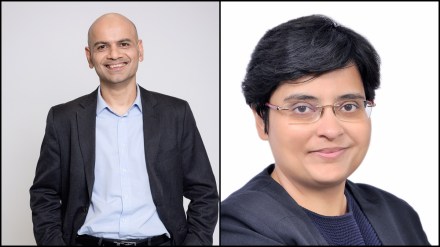At the unveiling of the Kantar BrandZ Top 75 Most Valuable Indian Brands, Deepender Rana, executive MD, South Asia, and Soumya Mohanty, MD, insights division, Kantar told Christina Moniz brand building is more critical today than ever before.
BrandZ’s report this year has some really interesting findings, the biggest being that TCS for the first time has taken the top spot. What would you pinpoint as the biggest takeaways, especially in the post-pandemic context?
Deepinder Rana: The biggest takeaway is the sheer growth in the total value of the top Indian brands. We have seen a growth of 35% CAGR over 2020 and that outpaces the rate of growth being posted in other major markets around the world. Leading brands like TCS and Infosys are now looking ahead at the next phase of transformation, which means we are well beyond the pandemic-driven growth that many tech companies saw. There were also some fundamental changes in Indian consumer behaviour, with higher adoption of digital payments and greater e-commerce penetration, all of which continue even post the pandemic.
Soumya Mohanty: Start-ups and tech-driven companies have performed well, but so have traditional brands. One of the key lessons is that brand building is critical and more so, when market conditions are tough.
What are some of the things the top brands have done right, on the brand building front?
SM: Brands need to build relevant salience, which means that they must be top-of-mind when I am planning to make a purchase. They also need to stay true to purpose, and connect to the larger purpose in terms of what they do not just for the consumer but also for the broader community. Sustainability is another key focal point for Indian consumers, and is therefore a critical part of brand building. In fact, Indian consumers rank sustainability in brand equity about 10% higher than global consumers, as per our Kantar Kantar Global Issues Barometer survey. Global consumers expect a lot more from their governments and multi-national agencies like the UN. Indian consumers expect more from businesses and want them to be socially and environmentally responsible.
Would you say then that Indian businesses are now making the shift beyond mere lip service and taking concrete steps on sustainability?
SM: Absolutely! We have seen brands like Unilever commit to reducing their carbon footprint. They are also making packaging changes, as seen in the case of companies like Swiggy and Zomato. There are these nudges that brands are taking towards a more sustainable future. It is important to point out that Indian consumers are not necessarily willing to pay more for sustainable solutions. They expect brands to provide more efficient products at the same price, keeping the sustainability factor in mind. It’s a bit of a tall order for brands, but they cannot afford to walk away from it.
With factors like inflation and the geopolitical crisis with Ukraine and Russia, what will Indian brands need to do to thrive and stay relevant?
SM: With the focus on digital, brand building has taken a back seat and there’s greater emphasis on optimisation and performance marketing. The whole conversation is around cost per acquisition. Our biggest message at BrandZ is wherever there is a growth in brand equity, there’s a growth in valuation. Our advice to marketers is therefore to keep investing in brand building even if they may be tempted to protect their bottom line. Brands like Asian Paints have been in the top 75 for a long time, because consumers continue to find them relevant and love them.
There are 11 start-ups on your list, who make up 11% of total valuation. How are these new-age brands redefining brand building?
DR: What these brands are doing is in fact, classical marketing – they’re looking for what is relevant to the consumer and delivering exactly that. They are not employing anything different from traditional companies. However, some of these brands do need to watch out for what we call a salience gap. Some brands tend to advertise a lot and enlist celebrities just to get noticed. Often their objectives are just to get downloads. In the process, they may grab eyeballs but also build empty salience. These brands grow slower because they may be high in salience but low in relevance and meaning.
Also Read: Niva Bupa onboards Leo Burnett as its advertising agency
